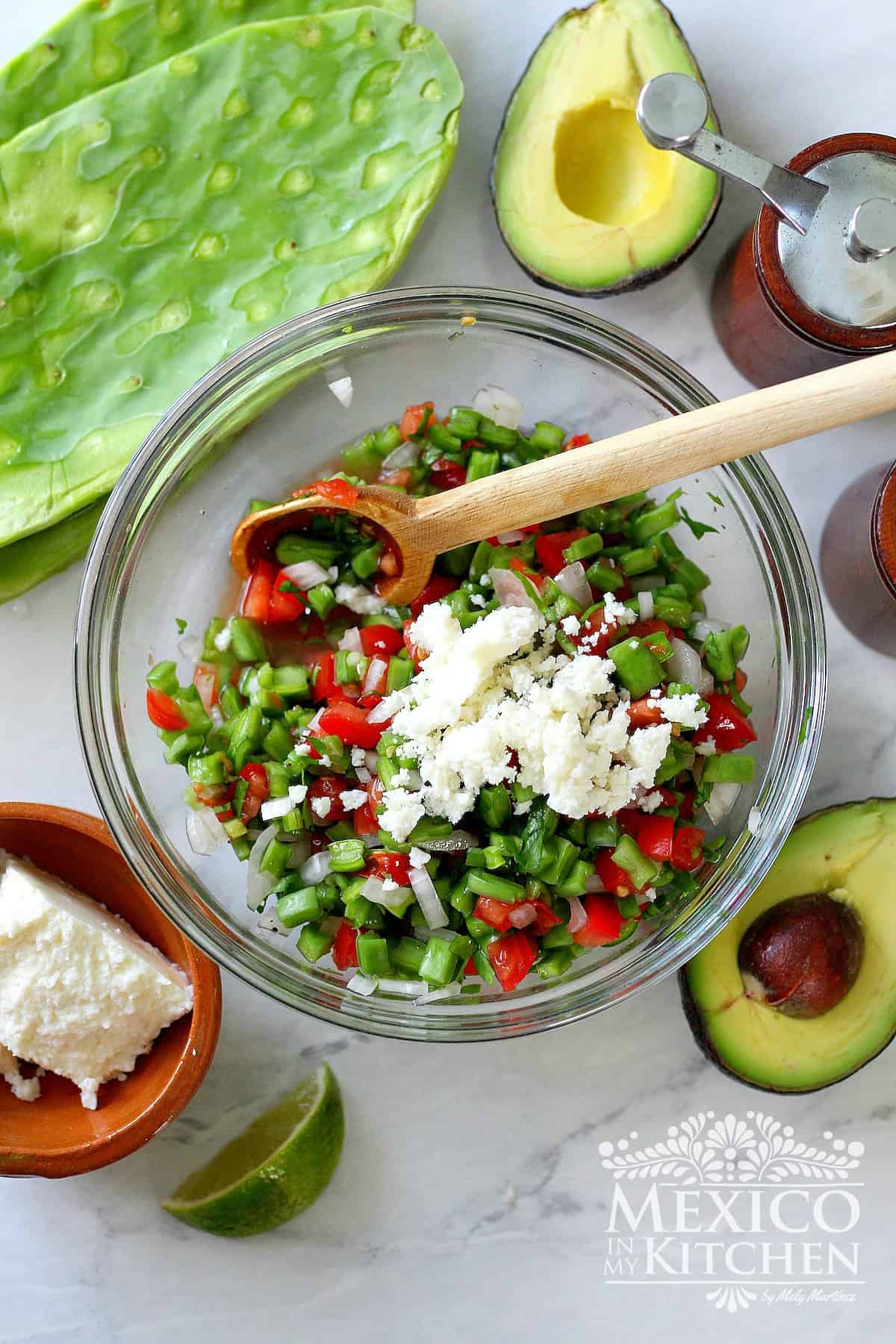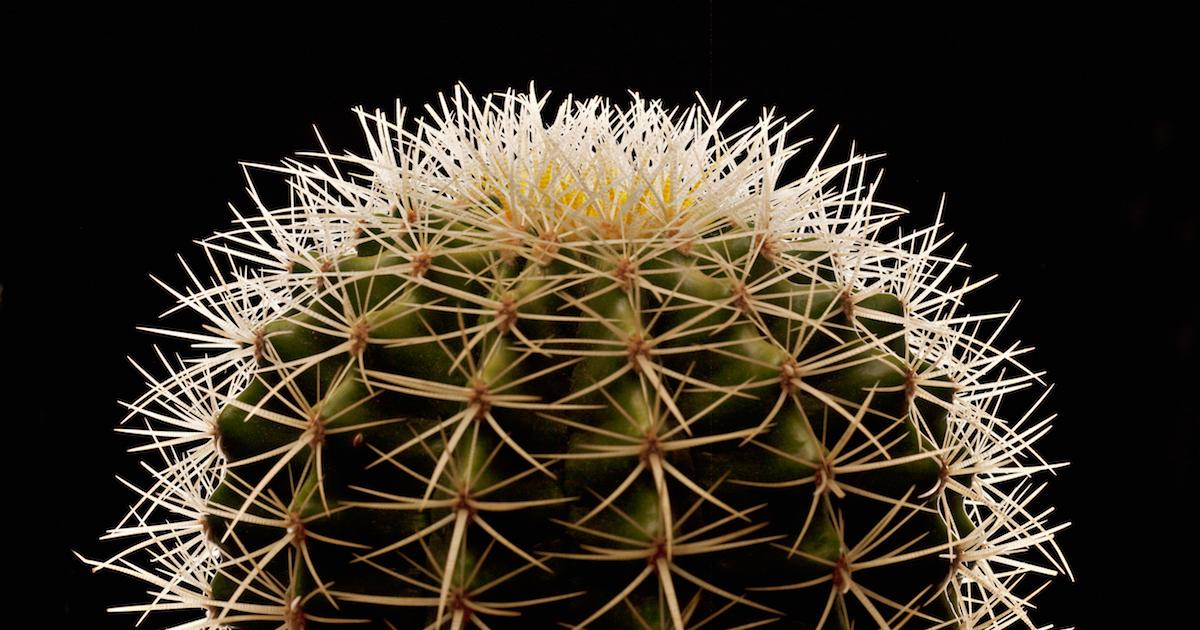Yes, you can eat cactus raw. Cactus can be eaten raw or cooked and is a nutritious addition to your diet.
Cactus, also known as nopales or prickly pear, is high in antioxidants, vitamins, and minerals. It can help decrease blood sugar, reduce inflammation, and lower cholesterol. However, it’s important to properly clean and prepare cactus before consumption to remove the spines and ensure safe consumption.
Whether you choose to eat it raw or cooked, cactus can be a versatile and healthy addition to various dishes. From salads to smoothies, cactus offers a unique flavor and texture that can enhance your culinary experience while providing numerous health benefits.
Cacti Cuisine: A Global Tradition
Cacti cuisine is a global tradition that spans centuries and cultures, with various cactus varieties being used in traditional dishes around the world. From the prickly pear cactus in Mexico to the nopal cactus in the southwestern United States, cacti have been an integral part of culinary traditions, offering unique flavors and nutritional benefits.
Cactus Varieties Around The World
1. Prickly Pear Cactus (Opuntia): Widely found in Mexico and the southwestern United States, the prickly pear cactus is known for its sweet and tangy fruit, called tunas, as well as its edible pads, known as nopales.
2. Nopal Cactus (Opuntia cacti): Commonly used in Mexican cuisine, the nopal cactus is revered for its tender, slightly tangy pads that are often used in salads, tacos, and other savory dishes.
3. Dwarf Prickly Pear (Opuntia humifusa): This cactus variety is native to the eastern United States and is known for its edible pads and sweet, juicy fruit.
Historical Uses Of Cactus In Food
- Aztec and Mayan civilizations utilized the prickly pear cactus for both its fruit and pads, incorporating them into various dishes and beverages.
- Native American tribes in the southwestern United States used the nopal cactus as a staple food source, consuming its pads and fruit in their diets.
- In North Africa, the prickly pear cactus has been a part of traditional cuisine, with its fruit and pads being used in salads, stews, and jams.
Whether it’s the nopales in Mexican cuisine or the prickly pear in North African dishes, cacti have been cherished for their versatility and unique flavor profiles, contributing to the rich tapestry of global culinary traditions.

Credit: www.mexicoinmykitchen.com
Culinary Delight Or Dietary Danger?
When it comes to exploring unique culinary experiences, cactus might not be the first thing that comes to mind. However, this prickly plant has been making its way onto plates around the world. But is it safe to eat cactus raw? Let’s delve into the nutritional benefits and potential risks of consuming this intriguing plant.
Nutritional Benefits Of Cactus
Cactus, also known as nopales or prickly pear, offers a range of nutritional benefits. Despite its spiky exterior, this plant is packed with antioxidants, vitamins, and minerals, making it a nutritious addition to any diet. Here are some of the key nutrients you can find in cactus:
| Nutrient | Benefits |
|---|---|
| Fiber | Aids in digestion and promotes satiety |
| Vitamin C | Boosts immune system and collagen production |
| Potassium | Regulates blood pressure and supports heart health |
| Magnesium | Essential for muscle function and bone health |
These nutrients not only contribute to overall well-being but may also help decrease blood sugar levels, reduce inflammation, and lower cholesterol levels. Incorporating cactas into your meals can be a tasty way to support your health.
Potential Risks And Toxins
While cactus can be a culinary delight, it’s important to be aware of potential risks and toxins associated with consuming certain varieties. Some cactus species contain chemicals that can cause discomfort or harm if not properly prepared or cooked. These chemicals are usually too acrid for most humans to tolerate and can be taxing on the kidneys if ingested.
Additionally, the flesh of some cactus species may cause vomiting, diarrhea, or temporary paralysis, which is not conducive to your well-being, especially in an emergency. It’s crucial to properly clean and cook cactus before consumption to eliminate these risks.
When preparing cactus for consumption, it is recommended to:
- Use kitchen tongs or gloves to hold the cactus leaves.
- Place them on a cutting board and scrape off the spines using a sharp knife.
- Trim the edges and rinse the paddles.
- Cut the paddles into small strips or cubes, depending on your preference.
Cactus can be enjoyed in various ways, including simmering, boiling, sautéing, deep frying, or grilling. However, it is important to cook the cactus thoroughly to ensure any potential toxins are neutralized.
So, is it safe to eat cactus raw? While some cactus varieties can be consumed raw, it is generally recommended to cook them to ensure any potential risks are eliminated. By properly preparing and cooking cactus, you can enjoy its unique flavors and reap its nutritional benefits.
The Edible Parts Of A Cactus
Yes, you can eat cactus raw. The edible parts of a cactus, like nopales and prickly pear fruit, are high in antioxidants and nutrients. They can be enjoyed plain, cooked, or added to salads for a healthy and tasty addition to your diet.
Nopales: The Savory Pads
- Nopales are nutritious, high in antioxidants, and can help lower cholesterol.
- They can be eaten raw in a salad or cooked in various dishes.
- When preparing nopales, remove the spines, trim the edges, and cut into strips.
Prickly Pear Fruit: Nature’s Sweet Treat
- Prickly pear fruit is rich in vitamins and minerals, offering health benefits.
- It can be consumed raw, or used in syrups, candies, or jellies.
- To eat prickly pear fruit, peel it, then slice or blend it for different recipes.
Eating cactus raw can be a healthy choice as nopales and prickly pear fruit are packed with nutrients. Nopales can be enjoyed in salads or cooked dishes, while prickly pear fruit offers a sweet treat or can be used in various recipes. Enjoy the unique flavors and health benefits of these edible cactus parts.

Credit: m.youtube.com
Preparing Cactus For Consumption
Eating raw cactus is not only possible but also nutritious. Nopales and prickly pear fruit are rich in antioxidants, vitamins, and minerals, offering health benefits such as reduced blood sugar and inflammation. To prepare cactus for consumption, simply remove the spines, trim the edges, and cut the paddles into small strips before incorporating them into your favorite dishes.
Preparing Cactus for Consumption
Cactus is a nutritious and tasty vegetable that can be consumed in various ways, both raw and cooked. However, before consuming cactus, it is important to prepare it properly. This section will discuss the cleaning and de-spinning techniques as well as the best practices for consuming cactus, whether raw or cooked.
Cleaning and de-spinning techniques
Cactus have spines that can cause injury and irritation, so it is important to remove them before consuming. Here are some cleaning and de-spinning techniques to follow:
– Use kitchen tongs or gloves to hold the cactus leaves.
– Place the cactus leaves on a cutting board and scrape the spines off using a sharp knife to clean them.
– Trim the edges and rinse the paddles.
– Cut the paddles into small strips.
Raw vs. cooked: Best practices
When it comes to consuming cactus, you may wonder whether it is safe to eat raw or if it is better to cook it. Here are some best practices to follow:
– Raw cactus can be eaten, but it is important to clean and de-spine it properly.
– Cooking cactus can help to reduce its sliminess and make it easier to digest.
– Cactus can be boiled, sautéed, grilled, or used in various dishes such as salads, tacos, and smoothies.
In conclusion, cactus is a nutritious and delicious vegetable that can be consumed both raw and cooked. It is important to prepare cactus properly by cleaning and de-spinning it before consumption. Whether you prefer raw or cooked cactus, there are various ways to enjoy this versatile vegetable.
Cactus In Your Kitchen
When it comes to incorporating cactus into your diet, you might be wondering if it’s safe to eat cactus raw. The good news is that certain types of cactus, such as nopales and prickly pear fruit, can be consumed raw and offer a range of health benefits.
Incorporating Cactus Into Your Diet
If you’re looking for creative ways to include cactus in your meals, you can start by adding raw cactus to salads or using it as a topping for tacos and sandwiches. Additionally, you can cook cactus by simmering, boiling, sautéing, deep frying, or grilling it to add a unique flavor and texture to your dishes.
Creative Recipes And Serving Suggestions
When it comes to serving cactus, consider grilling the paddles and serving them as a side dish with a sprinkle of lime juice for a refreshing flavor. You can also incorporate cactus into smoothies for a nutritious boost or use it as a filling for omelets and quesadillas.
Health Impacts Of Eating Cactus
Eating cactus can have various health benefits as it is rich in antioxidants, vitamins, and minerals. However, not all cacti are edible, and some species contain chemicals that can cause vomiting, diarrhea, or temporary paralysis. It is possible to eat certain types of cactus raw, but it is important to properly clean and prepare them beforehand.
Blood Sugar Regulation And Cactus
Nopales and prickly pear fruit may help decrease blood sugar levels.
Anti-inflammatory Properties And Cholesterol
Cactus is high in antioxidants and may help reduce inflammation and lower cholesterol.
Myths Debunked: Eating Cactus Raw
Discover the truth about eating cactus raw. While some varieties are edible when consumed fresh, others may be toxic and cause adverse effects. Proper preparation, such as removing spines and cleaning, is essential before consuming raw cactus.
Myths Debunked: Eating Cactus Raw
Cactus consumption has been a part of traditional Mexican cuisine for centuries. However, there are many myths surrounding the consumption of cactus, particularly when it comes to eating it raw. In this article, we will debunk some of the common misconceptions about eating cactus raw and fact-check its consumption.
Common Misconceptions
One of the most common misconceptions about eating cactus raw is that it is toxic. While it is true that some cactus species contain toxic compounds, the ones commonly consumed for food are safe to eat. Another myth is that eating cactus raw can cause serious gastrointestinal issues. However, this is untrue as long as the cactus is properly prepared and cleaned.
Fact-Checking Cactus Consumption
When it comes to consuming cactus, it is important to properly prepare it to ensure that it is safe to eat. The spines and thorns on the cactus pads must be removed before consumption, and the pads must be thoroughly cleaned to remove any dirt or debris. Once cleaned, cactus can be eaten raw or cooked, and it is a nutritious addition to any diet.
In conclusion, it is safe to eat cactus raw as long as it is properly prepared and cleaned. By debunking the common myths surrounding the consumption of cactus, we can enjoy this nutritious and delicious food without any fear or hesitation.

Credit: www.greenmatters.com
Safety First: Identifying Edible Cacti
Discovering the safety of eating cactus raw is essential. While some cactus varieties can be consumed fresh, it is crucial to identify edible species, remove spines, and prepare them properly to avoid any health issues. Understanding the nutritional benefits and potential risks will ensure a safe and enjoyable culinary experience with cactus.
Which Cacti Can You Eat?
If you are considering adding cactus to your diet, it is important to know which cacti are safe to eat. Some of the most commonly consumed edible cacti include the prickly pear, saguaro, and dragon fruit cactus. These cacti are typically sold in grocery stores and can be prepared in a variety of ways. However, it is important to note that not all cacti are safe for consumption. Some cacti contain toxic compounds that can cause serious health problems if ingested.
Avoiding Hazardous Cacti
To ensure your safety when consuming cactus, it is important to know how to identify edible cacti. Avoid cacti that have a bitter taste or a milky sap, as these are signs that they may be toxic. Additionally, cacti with spines that are longer than two inches should be avoided, as they can cause injury to the mouth and throat.
When preparing cactus, it is important to wear gloves and use a sharp knife to remove the spines and outer layer of skin. Once cleaned, cactus can be eaten raw or cooked and is a healthy addition to a balanced diet.
Remember, when it comes to consuming cactus, safety should always be your top priority. By identifying edible cacti and taking the necessary precautions when preparing them, you can enjoy the many health benefits of this unique and nutritious plant.
Frequently Asked Questions
Is It Healthy To Eat Raw Cactus?
Eating raw cactus, like nopales and prickly pear, is healthy. They are high in antioxidants, vitamins, and minerals, and may help with blood sugar, inflammation, and cholesterol. Nopales and prickly pear can be eaten plain, cooked, or used in salads.
Can I Eat Nopales Raw?
Yes, you can eat nopales raw. They are high in antioxidants, vitamins, and minerals, making them a nutritious addition to your diet. Nopales can be eaten plain or used in various dishes, such as salads. Just make sure to clean them properly and remove the spines before consuming.
Why Can’t You Eat Cactus?
Cactus contains chemicals that are harsh on humans, causing nausea, diarrhea, and kidney strain if consumed.
How Do You Eat Raw Cactus Leaves?
To eat raw cactus leaves, use kitchen tongs to hold them and scrape off the spines with a sharp knife. Then, trim the edges, rinse the paddles, and cut them into small strips. You can eat cactus leaves raw or cooked, and they are best served with a tender, crunchy texture.
Wrap up
Eating raw cactus can be a nutritious addition to your diet. Nopales and prickly pear are rich in antioxidants and vitamins, offering health benefits such as blood sugar regulation and inflammation reduction. Whether cooked or eaten raw, cactus can be a delicious and healthy choice.

